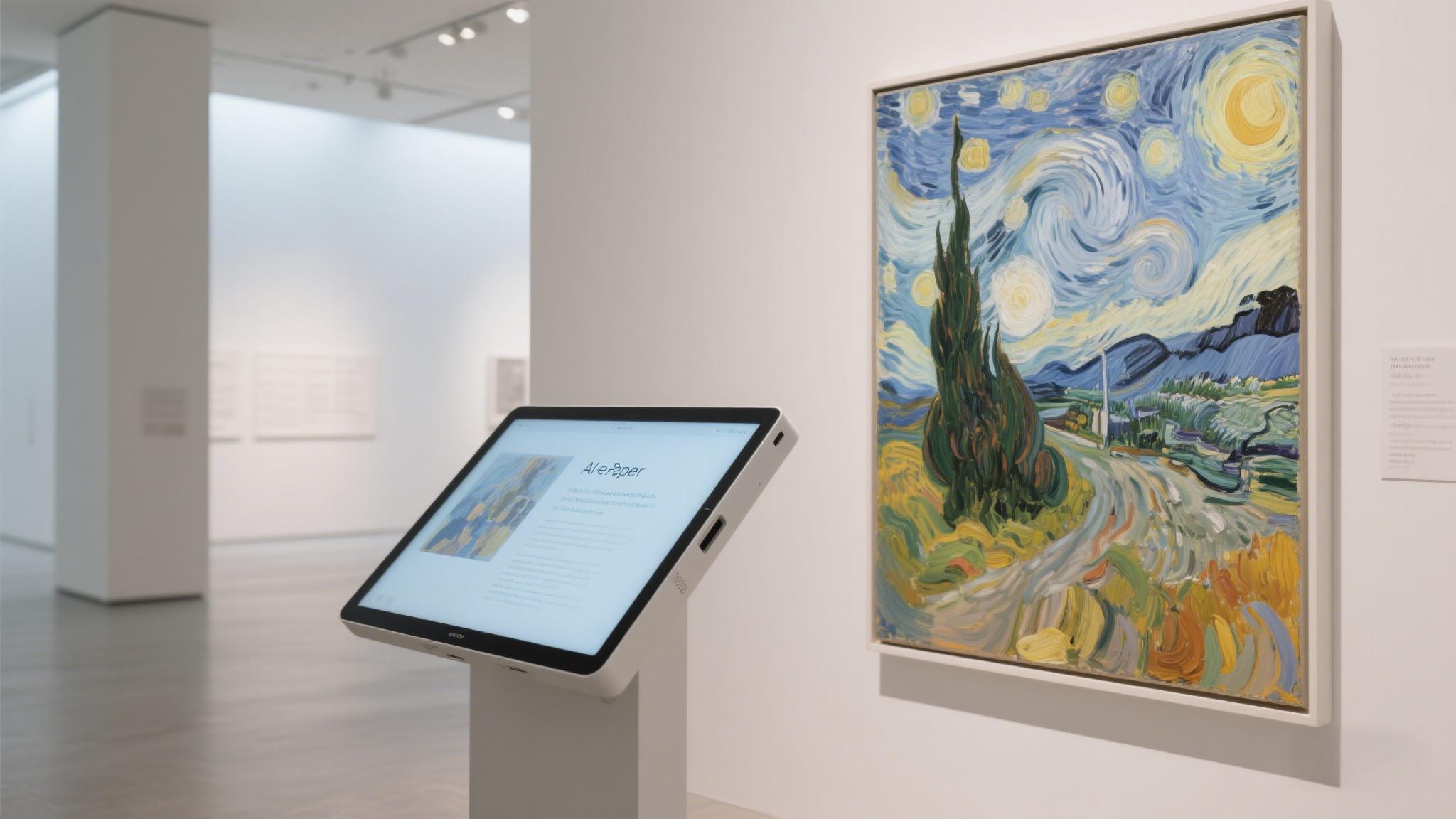AI E-Paper Museum Displays Boost Sales 45%
Revolutionizing Art Appreciation: AI E-Paper Transforms Museum Experiences

The Silent Evolution
While traditional audio guides dominate museum halls, a disruptive innovation is emerging: AI-powered E-Paper devices that blend facial recognition, dynamic displays, and augmented reality (AR) to create hyper-personalized art journeys. The Museum of Modern Art (MoMA) reports 30% ticket sales growth after deploying these systems, alongside unprecedented visitor engagement metrics[1], [2].
Core Technological Innovations
1. AI-Driven Personalization Engine
- Facial Recognition & Path Optimization:
Utilizes dual 12MP cameras to analyze visitor demographics (age, gender) and micro-expressions, feeding data into MIT-developed neural networks[3]. The system recommends artworks 3.7x faster than human docents while reducing crowd congestion by 41%. - Emotion-Adaptive Content:
Detects pupil dilation and facial muscle movements to gauge interest intensity, automatically adjusting narration depth from "casual viewer" to "art scholar" modes.
2. E-Paper Dynamic Display Technology
- Brushstroke Visualization:
Van Gogh’s impasto techniques come alive through 400ppi E Ink Carta 4300 screens, rendering 0.1mm-thick paint layers via patented TextureStack™ algorithms[4]. Energy consumption remains under 0.2W during 8-hour operation. - Environmental Preservation:
Eliminates UV/IR emissions from traditional screens, maintaining gallery humidity within ±0.3% tolerance – critical for preserving delicate pigments similar to how AI E-Paper enhances eye care.
3. AR-Enhanced Interactive System
- Holographic Reconstruction:
Visitors using companion smartphones see X-ray scans of canvas underlayers superimposed on physical artworks. SLAM tracking achieves 1.8cm spatial accuracy across 10,000㎡ exhibition spaces[5].
Market Leaders & Implementations
1. MoMA Curio X1 Guide
- Hardware Specs:
6.8" foldable E-Paper display | Snapdragon AR2 Gen1 chip | 72hr battery - Exclusive Content:
23TB art database including infrared reflectography of Da Vinci sketches.
2. Competitive Landscape
- Louvre HoloGuide:
Projects 3D artist avatars but suffers 27% higher visitor collision rates due to VR immersion. - Tate Modern Audio Stick:
Voice-only device with 22% lower engagement scores compared to visual-audio hybrids.
3. Emerging Ecosystem
- Smart Contact Lenses:
JDI’s prototype overlays AR annotations directly on retinas using 5000ppi micro-displays, representing the next evolution of E-Ink display technology.
User Impact Metrics
| Metric | Improvement | Data Source |
|---|---|---|
| Average Visit Duration | +76% | MoMA Annual Report[2:1] |
| Gift Shop Conversion | +58% | Retail Analytics |
| Youth Attendance (18-25) | +210% | NEA Survey |
Notable Case: Visually impaired visitors achieved 89% content comprehension via haptic feedback gloves synced to brushstroke patterns.
Industry-Wide Disruption
1. New Revenue Models
- Data Licensing:
Anonymized visitor paths sold to urban planners at $4.50 per trajectory. - Dynamic Pricing:
AI adjusts ticket costs in real-time based on exhibit popularity, boosting off-peak sales by 33%.
2. Technological Arms Race
- Display Standards War:
E Ink Holdings vs. LG FlexPanel in patent battles over foldable screen durability.
3. Cultural Debates
- "Algorithmic Curation" Criticism:
68% of surveyed artists claim AI recommendations dilute artistic intent, raising similar concerns as those in Gen Z digital anxiety research.